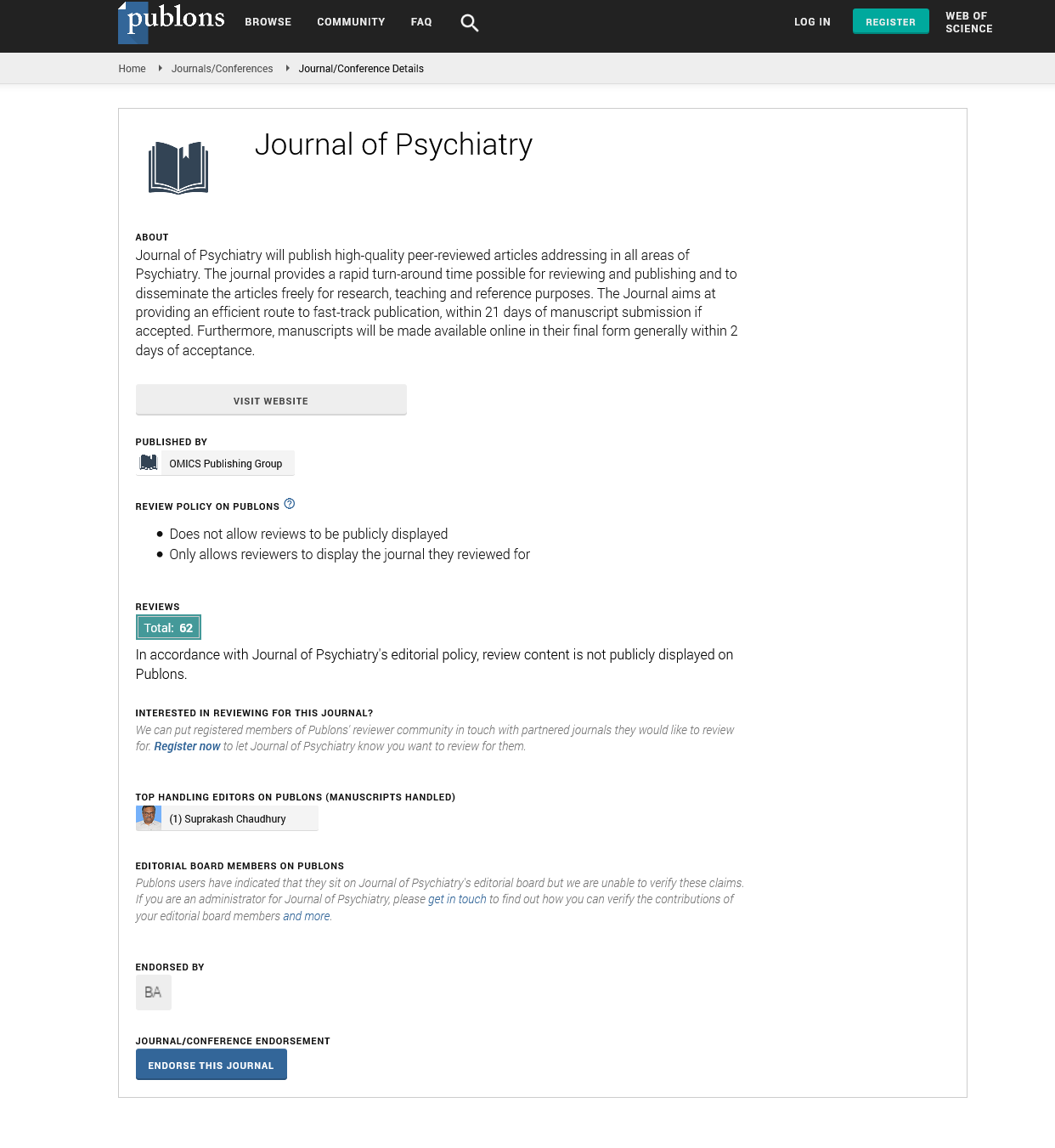Indexed In
- RefSeek
- Hamdard University
- EBSCO A-Z
- OCLC- WorldCat
- SWB online catalog
- Publons
- International committee of medical journals editors (ICMJE)
- Geneva Foundation for Medical Education and Research
Useful Links
Share This Page
Open Access Journals
- Agri and Aquaculture
- Biochemistry
- Bioinformatics & Systems Biology
- Business & Management
- Chemistry
- Clinical Sciences
- Engineering
- Food & Nutrition
- General Science
- Genetics & Molecular Biology
- Immunology & Microbiology
- Medical Sciences
- Neuroscience & Psychology
- Nursing & Health Care
- Pharmaceutical Sciences
Perspective - (2024) Volume 27, Issue 4
Rehabilitation and Neuroplasticity in Traumatic Brain Injury
Yuan Xue*Received: 02-Jul-2024, Manuscript No. JOP-24-26608; Editor assigned: 05-Jul-2024, Pre QC No. JOP-24-26608 (PQ); Reviewed: 19-Jul-2024, QC No. JOP-24-26608; Revised: 26-Jul-2024, Manuscript No. JOP-24-26608 (R); Published: 02-Aug-2024, DOI: 10.35248/2378-5756.24.27.701
Description
Traumatic Brain Injury (TBI) is a significant public health concern globally, affecting millions each year with varying degrees of cognitive, physical, and emotional impairments. Rehabilitation strategies play a important role in helping individuals recover and regain function after TBI. Central to these strategies is the concept of neuroplasticity-the brain's ability to reorganize itself by forming new neural connections in response to learning, experience, or injury.
Traumatic brain injury occurs when a sudden trauma causes damage to the brain. This can result from a variety of incidents such as falls, vehicle accidents, sports injuries, or violence. The severity of TBI can range from mild (concussion) to severe, leading to long-term physical, cognitive, and emotional deficits. Neuroplasticity refers to the brain's ability to reorganize itself by forming new neural connections throughout life. This process is essential for learning and memory but becomes particularly critical following injury. In the context of TBI, neuroplasticity allows the brain to compensate for damaged areas by rerouting functions to undamaged areas or forming new connections around the injury site.
Rehabilitation approaches
Rehabilitation after TBI aims to maximize functional recovery and independence. It typically involves a multidisciplinary approach customized to the individual's specific impairments and needs. Key components of rehabilitation include:
• Physical therapy is helps improve mobility, coordination, and strength, addressing physical impairments resulting from TBI.
• Occupational therapy is focuses on improving daily living skills such as dressing, eating, and using technology, adapting tasks to match the person's abilities.
• Speech and language therapy is addresses communication deficits, speech impairments, and difficulties with swallowing that may arise from TBI.
• Cognitive rehabilitation is targets cognitive deficits such as memory problems, attention deficits, and executive dysfunction through structured exercises and strategies.
• Psychological support is addresses emotional and behavioral changes post-TBI, including depression, anxiety, and coping with disability.
Role of neuroplasticity in rehabilitation
Neuroplasticity underpins the effectiveness of rehabilitation strategies post-TBI. Through targeted interventions and repetitive practice, rehabilitation programs aim to control neuroplasticity to promote recovery and functional improvement. Techniques that leverage neuroplasticity include:
• Task-specific training was involves practicing tasks relevant to the individual's goals and daily life, stimulating specific neural circuits involved in motor, cognitive, or sensory functions.
• Constraint-Induced Movement Therapy (CIMT) was encourages the use of the affected limb by restraining the unaffected limb, promoting neural reorganization and motor recovery.
• Cognitive training is uses exercises and strategies to improve cognitive functions such as memory, attention, and problemsolving, facilitating neural plasticity in cognitive networks.
• Environmental enrichment is Provides a stimulating environment that encourages adaptive behaviors and neural connections, supporting recovery of function across various domains.
Neuroimaging insights into neuroplasticity
Advancements in neuroimaging techniques, such as MRI (Magnetic Resonance Imaging) and fMRI (functional MRI), have revolutionized our understanding of neuroplasticity following TBI. These tools allow researchers to visualize structural changes in the brain and map functional reorganization in response to injury and rehabilitation. Studies using neuroimaging have shown:
Functional reorganization: Compensation for damaged areas by activation of alternative brain regions involved in motor, sensory, and cognitive functions.
Structural changes: Reorganization of white matter tracts and cortical thickness in response to rehabilitation interventions.
Predictors of recovery: Identification of biomarkers and neural correlates that predict functional outcomes and response to rehabilitation efforts.
Despite the potential role of neuroplasticity in TBI rehabilitation, several challenges remain. Variability in injury severity and individual responses to rehabilitation complicates the treatment planning and outcomes. Access to specialized rehabilitation services and long-term care also varies, impacting recovery trajectories. Future research directions include further elucidating the mechanisms of neuroplasticity post-TBI, optimizing rehabilitation protocols through personalized medicine approaches, and exploring novel therapies such as brain stimulation techniques to enhance neural recovery.
In conclusion, rehabilitation and neuroplasticity are intertwined in the drive of recovery following traumatic brain injury. By understanding and harnessing the brain's adaptive capabilities, rehabilitation professionals can optimize treatment strategies to improve functional outcomes and quality of life for individuals affected by TBI, Continued research and innovation in neuroplasticity offer hope for advancing rehabilitation practices and ultimately enhancing recovery trajectories for TBI survivors.
Citation: Xue Y (2024) Rehabilitation and Neuroplasticity in Traumatic Brain Injury. J Psychiatry. 27:701.
Copyright: © 2024 Xue Y. This is an open access article distributed under the terms of the Creative Commons Attribution License, which permits unrestricted use, distribution, and reproduction in any medium, provided the original author and source are credited.

